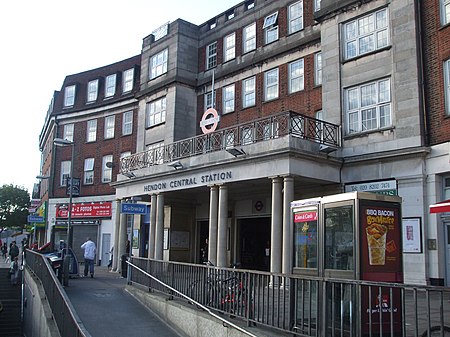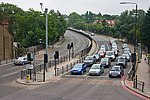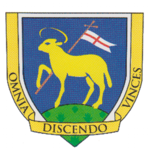Hendon Central tube station
1923 establishments in EnglandFormer London Electric Railway stationsHendonLondon Underground Night Tube stationsNorthern line stations ... and 6 more
Rail transport stations in London fare zone 3Rail transport stations in London fare zone 4Railway stations in Great Britain opened in 1923Stanley Heaps railway stationsTube stations in the London Borough of BarnetUse British English from August 2012

Hendon Central is a London Underground station in North West London on the A41. The station is on the Edgware branch of the Northern line, between Colindale and Brent Cross stations, and is on the boundary between Travelcard Zone 3 and Zone 4. Its postcode is NW4 2TE. It was opened along with Brent Cross (then called Brent) tube station on 19 November 1923 as the first stage of an extension of the Golders Green branch of the Charing Cross, Euston and Hampstead Railway. The station served as the terminus of the line's western fork until 18 August 1924 when the second and final section of the extension to Edgware was opened.
Excerpt from the Wikipedia article Hendon Central tube station (License: CC BY-SA 3.0, Authors, Images).Hendon Central tube station
Central Circus, London Hendon Central (London Borough of Barnet)
Geographical coordinates (GPS) Address Nearby Places Show on map
Geographical coordinates (GPS)
| Latitude | Longitude |
|---|---|
| N 51.583 ° | E -0.226 ° |
Address
Hendon Central
Central Circus
NW4 3AS London, Hendon Central (London Borough of Barnet)
England, United Kingdom
Open on Google Maps








